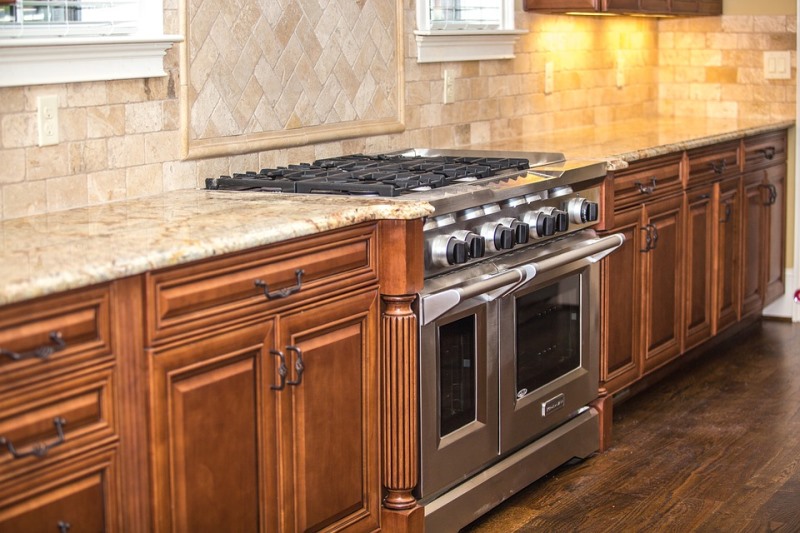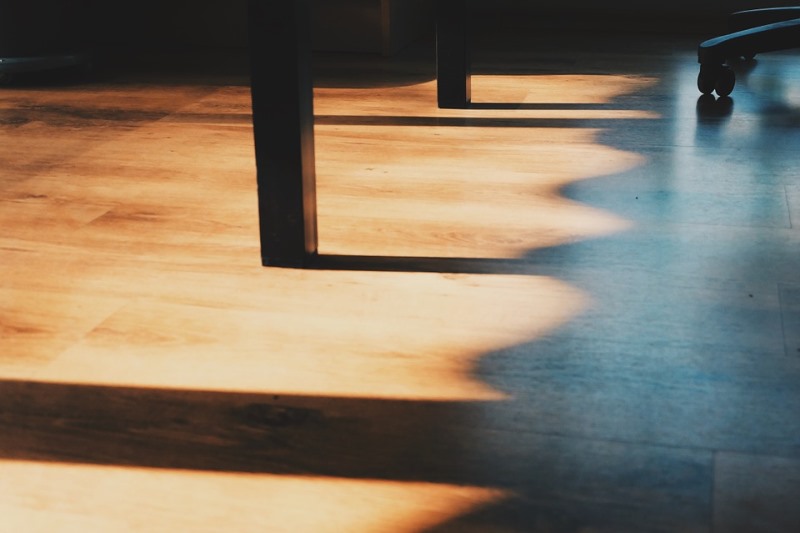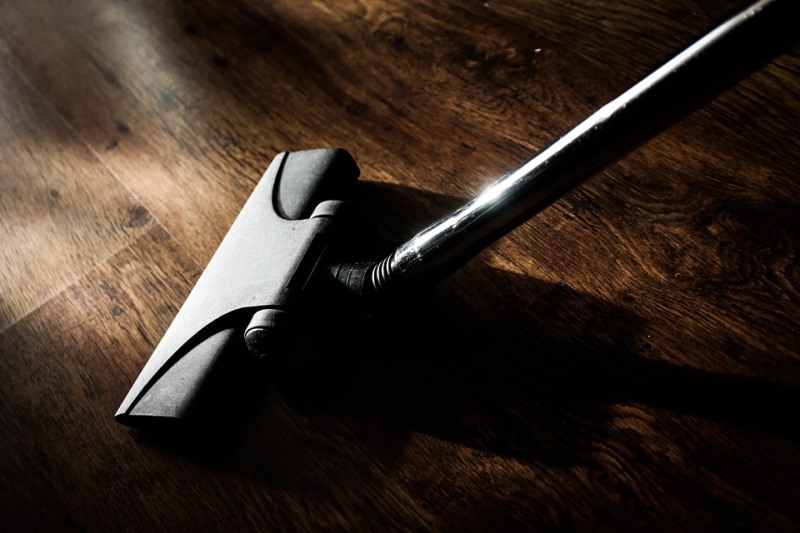The living room and kitchen are the most used areas inside your home. Some home experts claim that the kitchen floor takes more abuse from high-traffic volume, things being dropped, chairs dragged across the floor from the table and especially, spills. Choosing to replace the old flooring with hardwood is an ideal solution if you’re going to take care of it properly.
 |
| Kitchen Hardwood Flooring |
What Qualities to Look for In Hardwood Flooring?
The kind of hardwood flooring that is best used for kitchen applications can vary greatly in quality and price. Since your kitchen floor takes so much abuse it makes perfect sense to choose products that are resistant and can last for years to come. Here are some valuable tips that can help you choose wisely.
- Water based acrylic finishes are expensive, but can be re-coated in the future if damage is done.
- High-gloss and satin-sheen finishes hide dust or dirt better when you have no time to clean them.
- Some of the more durable and common hardwood flooring is made from oak, ash, cherry and maple.
- Flooring with squared edges creates tight seams that prevent dirt accumulation.
- High textured wood species blend any type of damage into the grain pattern better than light textured wood flooring.
 |
| Hardwood Flooring |
Advantages of Hardwood Flooring
Installing hardwood floors in the kitchen can offer you many alternatives over how you want the walls and cabinets to look. You can opt for wood grain cabinets and a light paint scheme on the walls to highlight both floors and cabinet design. Here are a few other advantages of wood flooring.
- Wood flooring can age over time which can give it a homey feeling.
- Hardwood has a long shelf life, which means it can last for decades and be refinished several times.
- Wood floors don’t attract allergens or mold that causes respiratory problems.
- The installation process is relatively easy for both homeowners and contractors to install.
- Area rugs can be placed on hardwood flooring to add protection and decor to the kitchen.
Care and Maintenance for Hardwood Flooring
You should never use the vacuum cleaner directly on any wood flooring. Use an attachment supplied with the vacuum to remove dust, dirt and debris. You might want to invest in a smaller vacuum designed for use on flat surfaces similar to tile or wood flooring.
Think about using window coverings similar to blinds or shades to block out direct ultraviolet rays on certain areas of the new wood flooring. These areas exposed to sunlight can fade over time. This can lead to an uneven color pattern on the wood floors with both lighter and darker areas.
Area rugs placed around the sink, stove and under the kitchen table can help prevent damage from occurring. The rugs not only add decoration to the area, but act as a cushion for pots or other items accidentally dropped on the floor.
Resist the urge of using water on any areas of your new wood flooring. Only use floor-cleaning products and polishes recommended for the type of hardwood flooring installed in your kitchen. Never wet mop or apply steam to your wood floors as it can dull the finish.
Attach self-stick felt protectors to table legs and chairs to prevent them from being dragged across the floor. This can add protection against indentations and scratches on the flooring surface. Never slide any type of furniture on wood flooring without felt protectors on the bottom legs.
Polyurethane wood flooring should be swept or dust mopped to remove dirt. Follow the manufacturer’s directions on what type of cleaning products to use on the surface. Never use wax on a surface finished floor.
Wood flooring surfaces with penetrating-stain finishes should be dust mopped and buffered to maintain the shine. Apply a cleaner and wax applicable to the floor manufacturer’s suggestions. Wood flooring should only need to be waxed once or twice per year to maintain the brilliant shine. Wood flooring installed in the kitchen can last for many years by following directions and recommendations for the type you chose. Caring for the floors is your responsibility as a homeowner to add value to your home.
October 27, 2016
Leave a comment

